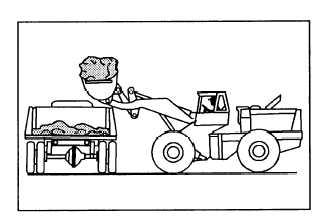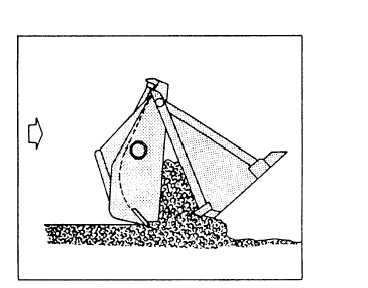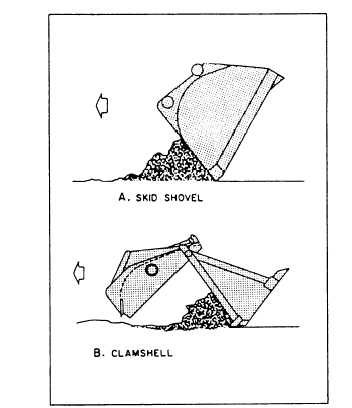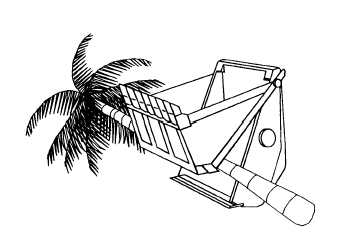Figure 9-24.—Loading large rocks.
Figure 9-25.-Bucket positioned for back dragging nonsolid
materials.
When loosening large rocks or other solid objects,
you can get greater force and penetration by digging
under the rock with the bucket, as shown in figure 9-23.
Lifting the rock with the bucket while pushing increases
traction and reduces track or wheel spinning.
When loading large rocks into dump trucks, place a
load of dirt or sand into the dump bed. This material acts
as a cushioning material and helps protect the dump bed
from damage. Then load the large rocks into the center
of the dump bed from the lowest possible height
(fig. 9-24).
Figure 9-26.—Bucket clamshell positioned for spreading
material.
Figure 9-27.—Bucket clamshell positioned for loading trees.
NOTE: When you have extended tasking to haul
large rocks or riprap, you should have the dump beds
lined with wooden planking. This will save time loading
sand or dirt and also protect the bed.
When finishing by back dragging in nonsolid
materials, position the bucket, as shown in figure 9-25,
views A or B.
NOTE: Back dragging abrasive materials causes
premature wear to the bucket.
By placing the bucket in the scraper position and
opening the clamshell slightly, you can spread material
on the run. The amount of spread can be controlled by
the size of the opening of the clamshell, as shown in
figure 9-26.
When transporting trees or other large objects,
always balance the load, as shown in figure 9-27.
9-11







